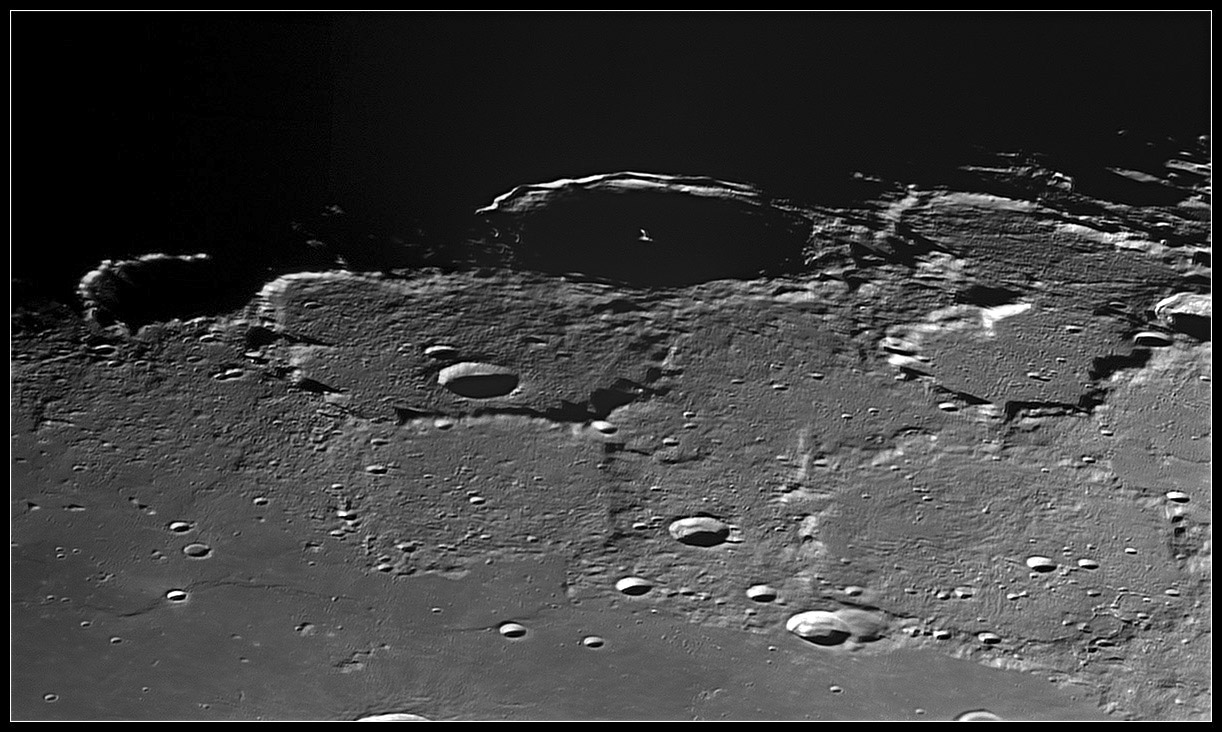April 4, 2013
Textures

image by Michael Vlasov, Rehovot city, Israel
Reading an image requires looking at everything. The most obvious things are the impact craters of various sizes and states of preservation. All the areas that aren't crater walls are roughly flat with various textures. The biggest textural contrast is between the smoothness of Mare Frigoris lavas and the the adjacent slightly elevated (200-400 m) area, such as the mostly gone crater of South, that is covered in small hills. This is ejecta from the formation of the Imbrium Basin, a smashed up and rubblized excavated rock, a more subdued version of the debris between the Alpine Valley and Eudoxus. Both to the right and left of Pythagoras the texture is rougher and aligned with that crater - its Pythagoras ejecta sitting on top of Imbrium ejecta. Look very closely near the bottom right rim and you may notice small flat places - these are impact melt ponds that are concentrated on the eastern and northestern sidesof the crater. Another variety of ejecta texture is weakly on display on the floor of J. Herschel at bottom right. You get the impression that the ejecta is streaked, as if were moving across the surface when it froze in place. That is probably what happened, just as we see on the floor of Inghirami, half buried in Orientale ejecta.
Chuck Wood
Technical Details
march 24th, 2013. Skywatcher 250mm Newtonian, Televue 5X powermate (f/30), DFK21AU618 camera. Mosaic of 6 frames, each is a stack of 1500/5000 images. 1/100 second exposures.
Related Links
Rükl plate 2
21st Century Atlas charts 20 & L7 .
Michael's website
Yesterday's LPOD: Seeing Red
Tomorrow's LPOD: Don't Give Me Any of Your Lip
COMMENTS?
Register, Log in, and join in the comments.



